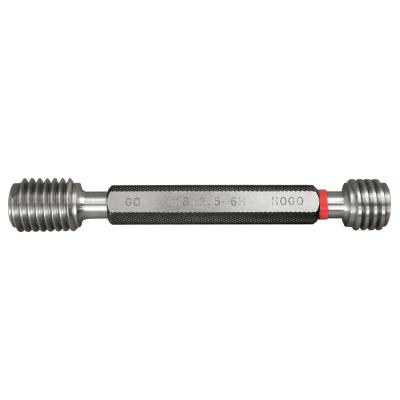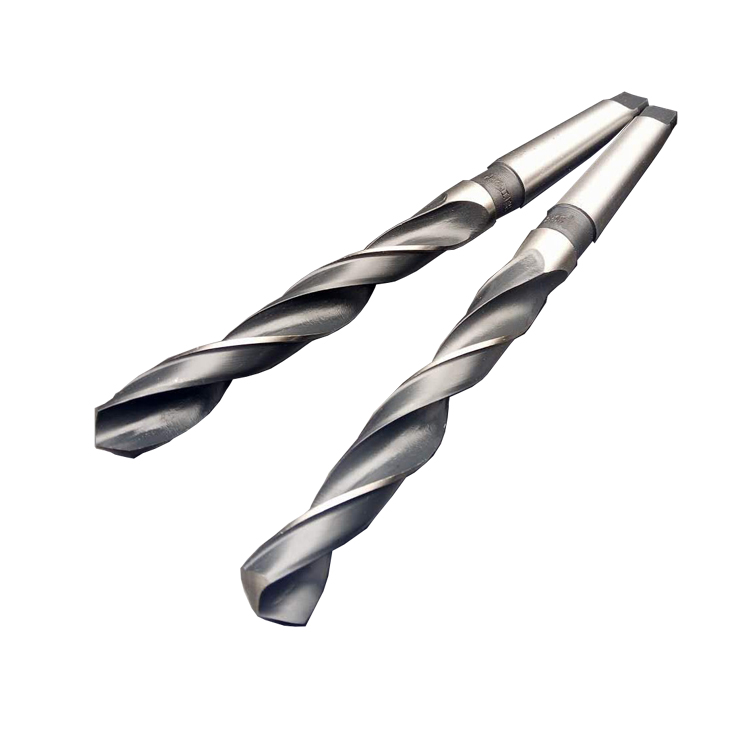morse taper drill sleeve Factory
A morse taper drill sleeve, also known as a drill socket or reduction sleeve, is an adapter used to connect drills with different Morse taper sizes. It allows a drill bit with a smaller Morse taper shank to be used in a drill press or lathe spindle with a larger Morse taper bore. This guide covers everything from understanding Morse tapers to selecting the right sleeve and maintaining it for optimal performance. For high quality tooling solutions, visit Wayleading Tools.
Understanding Morse Tapers
The Morse taper is a standardized system for fitting cutting tools, such as drill bits and reamers, into the spindles of machine tools. It is self-holding, meaning that the taper itself creates sufficient friction to hold the tool in place under normal cutting conditions. This eliminates the need for separate drawbars or other locking mechanisms.
Morse Taper Sizes
Morse tapers are designated by a number, ranging from MT0 to MT7. The larger the number, the larger the taper. Each Morse taper size has a specific taper angle and dimensions. Here’s a table showing the basic dimensions (nominal) of Morse Tapers:
| Taper Size | Large End Diameter (inches) | Small End Diameter (inches) | Taper per Foot (inches) |
|---|---|---|---|
| MT0 | 0.336 | 0.252 | 0.624 |
| MT1 | 0.475 | 0.369 | 0.600 |
| MT2 | 0.700 | 0.572 | 0.602 |
| MT3 | 0.938 | 0.778 | 0.602 |
| MT4 | 1.231 | 1.020 | 0.623 |
| MT5 | 1.748 | 1.500 | 0.630 |
| MT6 | 2.494 | 2.156 | 0.626 |
| MT7 | 3.270 | 2.875 | 0.624 |
Source: Machinery's Handbook
What is a Morse Taper Drill Sleeve?
A morse taper drill sleeve, sometimes called a morse taper drill socket, is an adapter used to allow the use of drill bits or other tools with smaller Morse taper shanks in machines with larger Morse taper spindles. In essence, it bridges the gap between different Morse taper sizes.
Functionality
The primary function of a morse taper drill sleeve is to adapt. It allows you to use a wider range of tooling without having to purchase new equipment or modify existing machinery. For example, if you have a drill press with an MT3 spindle and a set of drill bits with MT2 shanks, you would use an MT3 to MT2 morse taper drill sleeve.
Types of Morse Taper Sleeves
- Reducing Sleeves: These sleeves reduce the size of the taper. For example, an MT3 to MT2 reducing sleeve.
- Extension Sleeves: These sleeves extend the reach of the tool while maintaining the same taper size. Although less common than reducing sleeves, they can be useful in specific applications.
Selecting the Right Morse Taper Drill Sleeve
Choosing the correct morse taper drill sleeve is crucial for ensuring accurate and safe operation. Here’s what to consider:
Determine the Required Taper Sizes
First, identify the Morse taper size of your machine spindle and the Morse taper size of the drill bit or tool you want to use. The sleeve should match these sizes.
Material and Hardness
Morse taper drill sleeves are typically made of hardened steel. Ensure that the sleeve you choose is made of high-quality steel that can withstand the pressures of drilling and machining. A hardness rating of HRC 50-60 is generally recommended. The Wayleading Tools product line utilizes high-speed steel (HSS) which undergoes rigorous quality testing.
Accuracy and Finish
The accuracy of the morse taper drill sleeve is critical for maintaining concentricity and preventing runout. Look for sleeves with a precision-ground finish and minimal tolerance. The surface finish should be smooth to ensure proper seating and prevent slippage.
Using a Morse Taper Drill Sleeve
Proper installation and removal of a morse taper drill sleeve is important to avoid damage to the sleeve, the tool, or the machine spindle.
Installation
- Clean the Tapers: Ensure that both the inside of the machine spindle and the outside of the sleeve are clean and free of debris, oil, or rust. Use a clean, dry cloth to wipe the tapers.
- Align the Sleeve: Carefully align the morse taper drill sleeve with the machine spindle.
- Insert the Sleeve: Gently push the sleeve into the spindle. A slight twisting motion can help to seat the sleeve properly.
- Insert the Drill Bit: Clean the drill bit's taper. Insert the drill bit into the sleeve, using the same method as inserting the sleeve into the spindle.
Removal
Morse tapers are designed to be self-holding, so removing them requires a bit of force. Most drill presses and lathes have a knockout bar or drift that is used to eject the tool.
- Insert the Knockout Bar: Insert the knockout bar into the slot on the machine spindle.
- Tap the Bar: Use a hammer to gently tap the knockout bar. This will apply pressure to the back of the sleeve and dislodge it from the spindle.
- Remove the Sleeve and Tool: Once the sleeve is loosened, carefully remove it and the drill bit from the spindle.
Maintenance and Care
Proper maintenance can significantly extend the life of your morse taper drill sleeve.
Cleaning
Regularly clean the sleeve and spindle to remove dirt, chips, and other debris. Use a clean, dry cloth and, if necessary, a mild solvent. Ensure that the sleeve is completely dry before storing it.
Lubrication
While Morse tapers are self-holding, a light coating of anti-seize compound or a specialized Morse taper lubricant can help prevent seizing and make removal easier. Apply a thin layer to the taper before installation.
Storage
Store morse taper drill sleeves in a dry, clean place. Consider using a storage rack or case to protect them from damage and keep them organized. This will also help prevent rust and corrosion.
Where to Buy High-Quality Morse Taper Drill Sleeves
When purchasing morse taper drill sleeves, it is essential to choose a reputable supplier that offers high-quality products. Look for manufacturers and distributors that specialize in tooling and machining supplies. Wayleading Tools offers a wide range of high-quality morse taper drill sleeves designed to meet the needs of professional machinists and hobbyists alike.
Troubleshooting Common Issues
Sleeve Slipping or Spinning
If the sleeve slips or spins during operation, it could be due to several factors:
- Contamination: Ensure that both the sleeve and spindle are clean and free of oil or debris.
- Improper Fit: Verify that the sleeve is the correct size for the spindle and the drill bit.
- Worn Tapers: If the tapers are worn or damaged, the sleeve may not hold properly. Consider replacing the sleeve or reconditioning the spindle.
Difficulty Removing the Sleeve
If you are having trouble removing the sleeve, try the following:
- Use a Knockout Bar: Ensure that you are using a knockout bar of the correct size and that you are applying force evenly.
- Lubrication: Apply a penetrating oil or lubricant to the taper joint and let it sit for a few minutes before attempting to remove the sleeve.
- Heat: In extreme cases, applying a small amount of heat to the spindle can help to expand it slightly and loosen the sleeve. Use caution when applying heat to avoid damaging the machine.
By understanding Morse tapers, selecting the right morse taper drill sleeve, and following proper installation and maintenance procedures, you can ensure that your machining operations are accurate, efficient, and safe.
Related products
Related products
Best selling products
Best selling products-
 5C Hex Collet With Inch and Metric Size
5C Hex Collet With Inch and Metric Size -
 3 Flutes HSS Chamfering Countersink Drill bitl With 60 And 90 Degree
3 Flutes HSS Chamfering Countersink Drill bitl With 60 And 90 Degree -
 Type G Arc Pointed Tree Tungsten Carbide Rotary Burr
Type G Arc Pointed Tree Tungsten Carbide Rotary Burr -
 ISO Metric Hexagon Die With Right Hand
ISO Metric Hexagon Die With Right Hand -
 Parting & Grooving Tool Blades For GTN Blades
Parting & Grooving Tool Blades For GTN Blades -
 Metric Thread Plug Gauge 6H Accuracy With Go & NO Go
Metric Thread Plug Gauge 6H Accuracy With Go & NO Go -
 HSS Shell End Mill Cutter With Bright & TiN Or TiAlN Coated
HSS Shell End Mill Cutter With Bright & TiN Or TiAlN Coated -
 Precision 7pcs Angle Blocks Set With High Quality Type
Precision 7pcs Angle Blocks Set With High Quality Type -
 Indexable Square Shoulder End Mill For Industrial
Indexable Square Shoulder End Mill For Industrial -
 Dead Center For Morse Taper Shank
Dead Center For Morse Taper Shank -
 MT/R8 Shank Quick Change Tapping Chuck With MT & R8 Shank
MT/R8 Shank Quick Change Tapping Chuck With MT & R8 Shank -
 30PCS HSS Metric And Inch Size MINI Tap & Die Set
30PCS HSS Metric And Inch Size MINI Tap & Die Set










